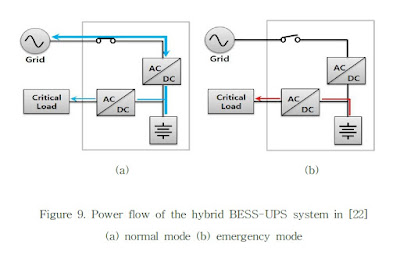School of Electrical and Electronic Engineering
University of Manchester
ABSTRACT
The University of Manchester Yiren Wang A thesis submitted for the degree of Doctor of Philosophy Modelling and Characterisation of Losses in Nanocrystalline Cores September 2015 Increasing the power density of the DC-DC converters requires the size and weight of the magnetic components, such as inductors and transformers, to be reduced. In this thesis, the losses in nanocrystalline inductor cores are characterised and analysed, including the traditional core loss and the gap loss caused by the air gap fringing flux. The loss calculations will form a basis for the design and optimisation of high power inductors for DC-DC converters for EV applications. This thesis first characterises experimentally the core losses in four nanocrystalline cores over a range of operating conditions that are representative of those encontered in typical high power converter applications, including non-sinusoidal waveforms and DC bias conditions. The core losses are assessed by the measured B-H loops and are characterised as a function of DC flux density, showing that for a fixed AC induction level, the losses can vary by almost an order of magnitude as the DC bias increases and the duty ratio moves away from 0.5. The results provide a more complete picture of the core loss variations with both DC and AC magnetisations than is available in manufactures’ data sheets. An electromagnetic finite element (FE) model is used to examine the gap loss that occurs in finely laminated nanocrystalline cores under high frequency operation. The loss is significant in the design example, contributing to almost half of the total inductor loss, and the gap loss is highly concentrated in the region of the air gap. The dependence of the gap loss on key inductor design parameters and operating condtions is also explored. An empirical equation is derived to provide a design-oriented basis for estimating gap losses. Thermal finite element analysis is used to estimate the temperature rise and identify the hot spot in a nanocrystalline inductor encapsulated in an alumimium case. The temperature distribution in the core largely corresponds to the non-uniform distribution of the gap loss. The thermal FEA can also be used to evaluate different thermal management methods to optimise the design for a more compact component. The FE modelling of gap loss and the thermal predictions are validated experimentally on a foil-wound Finemet inductor, showing good agreement between the predictions and measurements under various operating conditions.
LINK
https://www.research.manchester.ac.uk/portal/files/54578747/FULL_TEXT.PDF














































































 JOSIL ARTISTA PLASTICO FORTALEZA CEARA BRASIL AV.HERACLITO GRAÇA 41 TEL(85)32542378
JOSIL ARTISTA PLASTICO FORTALEZA CEARA BRASIL AV.HERACLITO GRAÇA 41 TEL(85)32542378
















